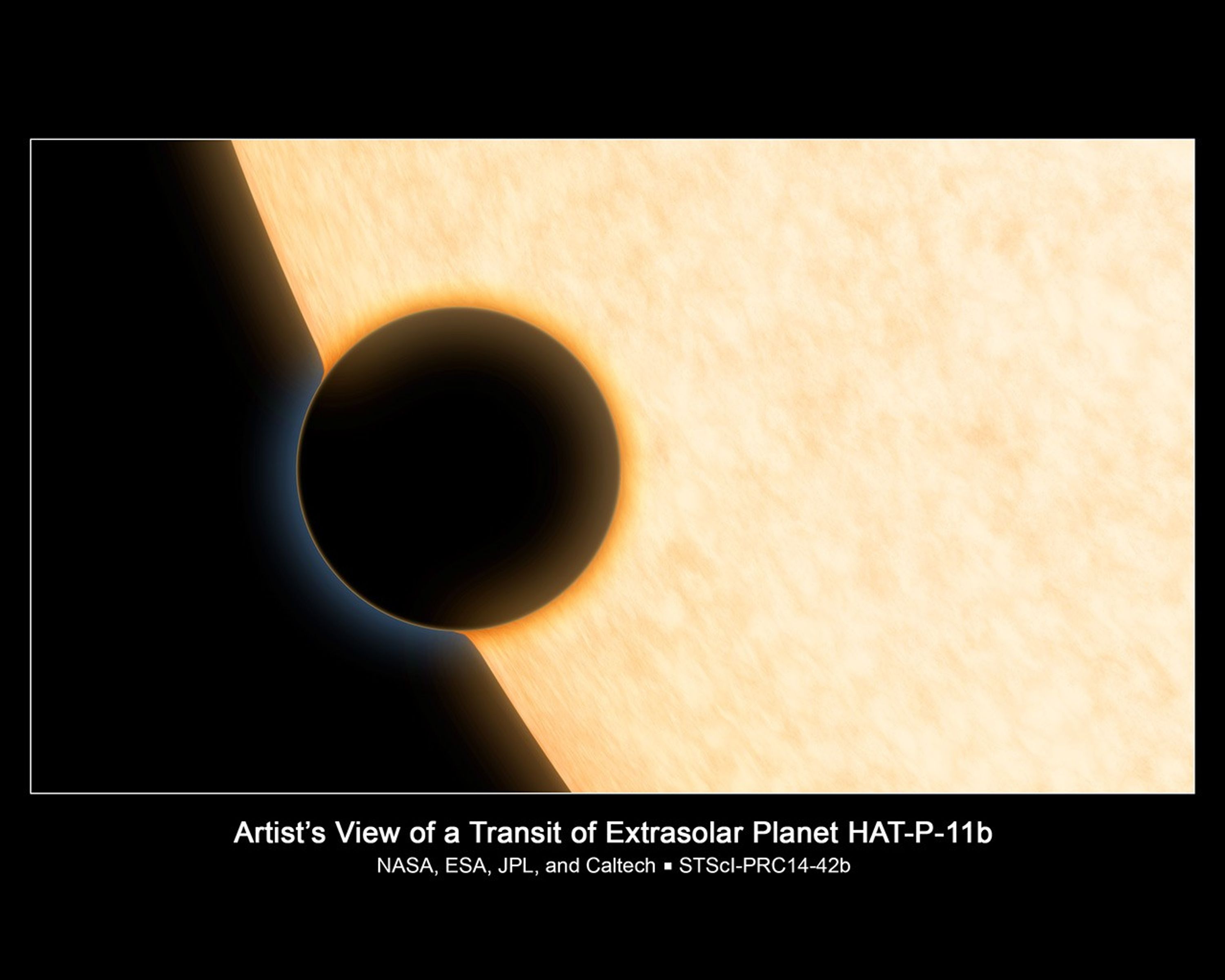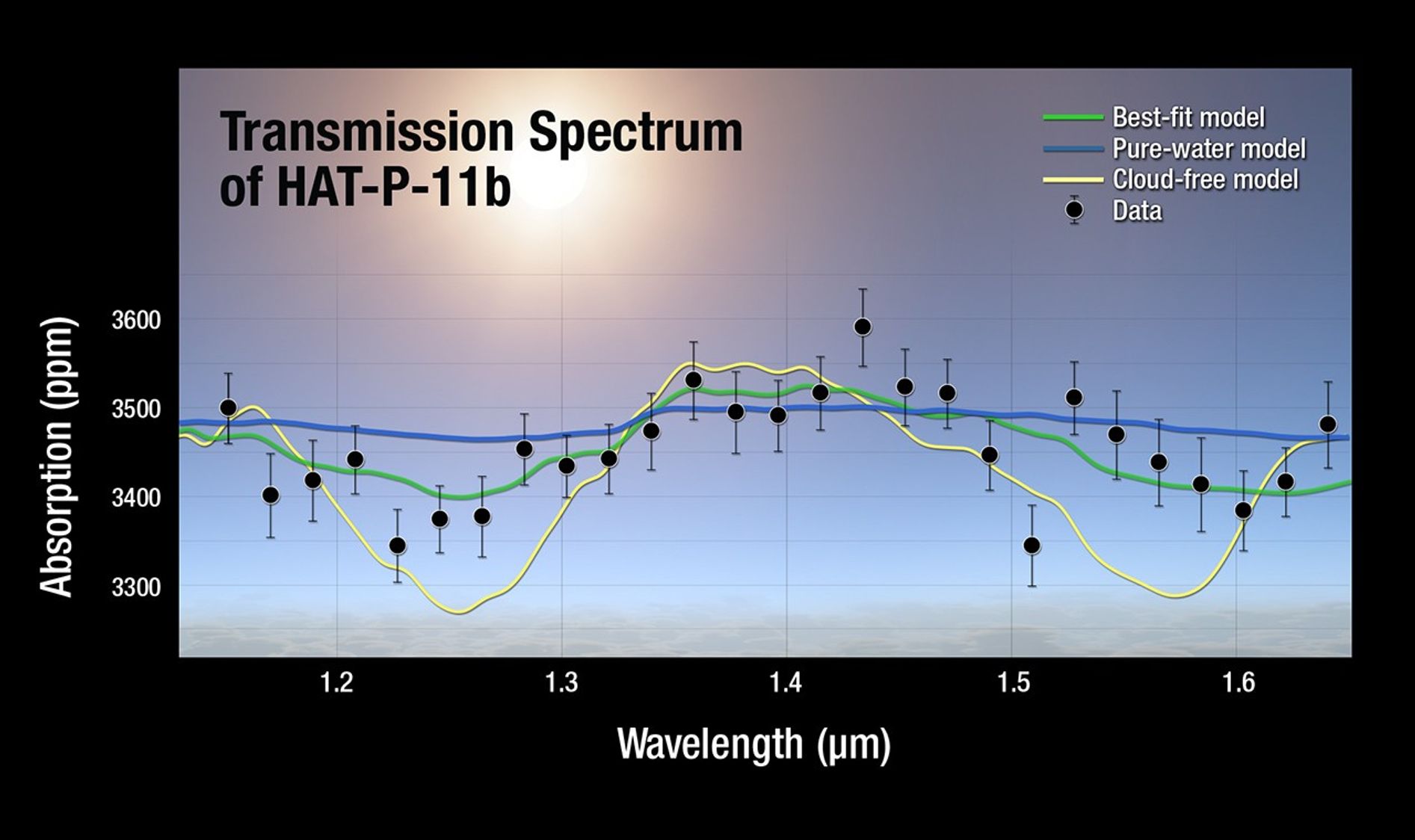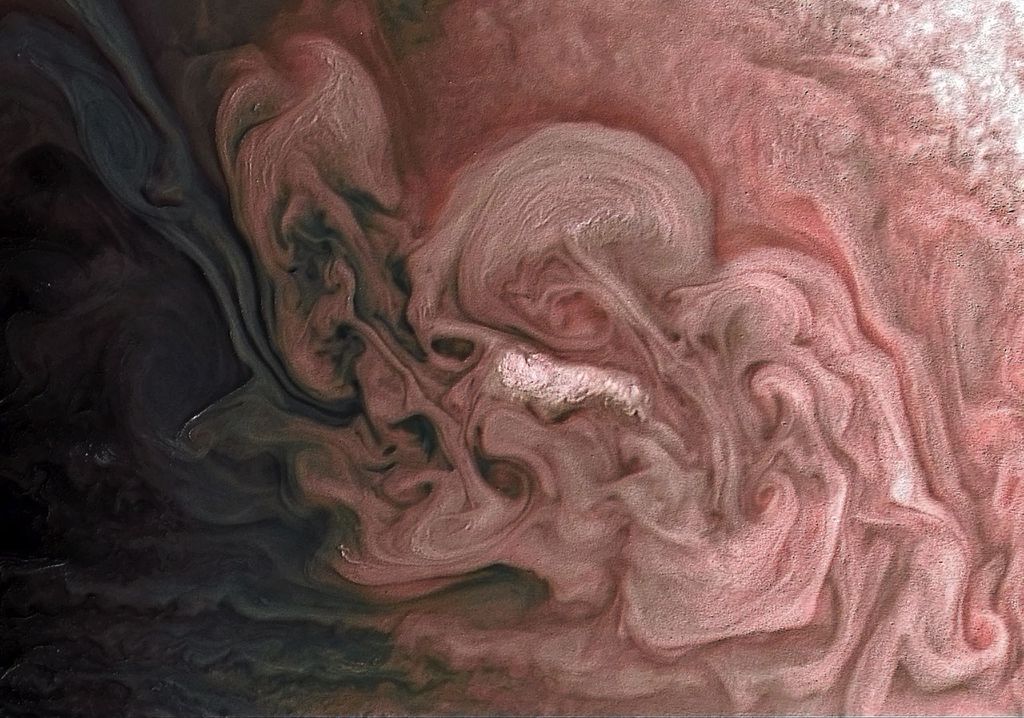1 min read
Artist’s Illustration of Clear Skies on Exoplanet HAT-P-11b

Scientists were excited to discover clear skies on a relatively small planet, about the size of Neptune, using the combined power of NASA's Hubble, Spitzer, and Kepler space telescopes. The view from this planet – were it possible to fly a spaceship into its gaseous layers – is illustrated at right. Before now, all of the planets observed in this size range had been found to have high cloud layers that blocked the ability to detect molecules in the planet's atmosphere (illustrated at left).
The clear planet, called HAT-P-11b, is gaseous with a rocky core, much like our own Neptune. Its atmosphere may have clouds deeper down, but the new observations show that the upper region is cloud-free. This good visibility enabled scientists to detect water vapor molecules in the planet's atmosphere.
About the Data
- Data DescriptionData DescriptionProposal: A description of the observations, their scientific justification, and the links to the data available in the science archive.
Science Team: The astronomers who planned the observations and analyzed the data. "PI" refers to the Principal Investigator.Note: Observations from NASA's Kepler Mission and Spitzer Space Telescope contributed to the discovery of HAT-P-11b. Hubble data for this release of HAT-P-11b were obtained from the following HST proposal: 12449: D. Deming (University of Maryland, College Park, and NASA Ames/Astrobiology Institute), H. Knutson (Caltech), N. Madhusudhan (University of Cambridge/Institute of Astronomy), and K. Todorov (ETH Zurich). The science team comprises: J. Fraine (University of Maryland, College Park, Institute of Astrophysics/Pontificia Universidad Católica de Chile, and Caltech), D. Deming (University of Maryland, College Park, and NASA Ames/Astrobiology Institute), B. Benneke and H. Knutson (Caltech), A. Jordan and N. Espinoza (Institute of Astrophysics/Pontificia Universidad Católica de Chile), N. Madhusudhan (University of Cambridge/Institute of Astronomy), A. Wilkins (University of Maryland, College Park), and K. Todorov (ETH Zurich).
- Object NameObject NameA name or catalog number that astronomers use to identify an astronomical object.HAT-P-11b
- Release DateSeptember 24, 2014
- Science ReleaseNASA Telescopes Find Clear Skies and Water Vapor on Exo-Neptune
- Credit
Related Images & Videos

Artist's Illustration of Exoplanet HAT-P-11b
A Neptune-size planet with a clear atmosphere is shown crossing in front of its star in this artist's depiction. Such crossings, or transits, are observed by telescopes like NASA's Hubble and Spitzer to glean information about planets' atmospheres. As starlight passes through a...

Artist's Illustration of HAT-P-11b Transmission Spectrum Plot
A plot of the transmission spectrum for exoplanet HAT-P-11b, with Kepler, Hubble WFC3, and Spitzer transits combined. The results show a robust detection of water absorption in the WFC3 data. Transmission spectra of selected atmospheric models are plotted for comparison.
Share
Details
Claire Andreoli
NASA’s Goddard Space Flight Center
Greenbelt, Maryland
claire.andreoli@nasa.gov






























